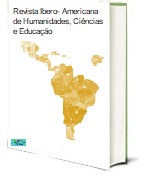PEDAGOGICAL POTENTIAL OF ELECTRONIC DEVICES IN THE FORMAL EDUCATION OF TECHNICAL LEVEL STUDENTS AT THE MUSIC SCHOOL OF THE FEDERAL UNIVERSITY OF PARÁ (EMUFPA)
DOI:
https://doi.org/10.51891/rease.v8i6.5812Keywords:
Graduates. Teachers. Theory. Music. Technology.Abstract
The research under the title Pedagogical potentiality of electronic devices in the formal education of technical level students at the music school of the Federal University of Pará (EMUFPA). The provocative context of the study was supported by readings regarding technological advances and pedagogical adaptations in formal education in music learning, which have occurred in parallel with traditional music education. Initial empirical observations indicate a mismatch between the traditionalism of music education and the pedagogical inclusion of electronic devices. The core question of the research is: what is the pedagogical potential of the use of electronic devices in formal music learning? As a logical consequence, the constitutive variables of the object of study are respectively: pedagogical use of electronic devices and resulting in musical learning. This is an analytical descriptive study. The theoretical foundations are pendular between the paradigm of complexity, requiring a more systemic view and pedagogical configurations facing the absorption of new electronic technologies in the musical area. The investigative methodology has as a data collection instrument: semi-structured questionnaires that can clarify the applicability of the electronic device in the student's daily life, being used by the teacher to generate harmony between the most up-to-date teaching didactics, greater interest in classes and concentration and connectivity to the world. Having two basic segments: teachers and dissenters. The possible results are expressed in a parallel drawing between pedagogical traditionalism in music teaching in the face of the emergence of devices that are being used by teachers and even by students voluntarily, without proper guidance, thus avoiding a possible wear in their applicability.
Downloads
Downloads
Published
How to Cite
Issue
Section
Categories
License
Atribuição CC BY

